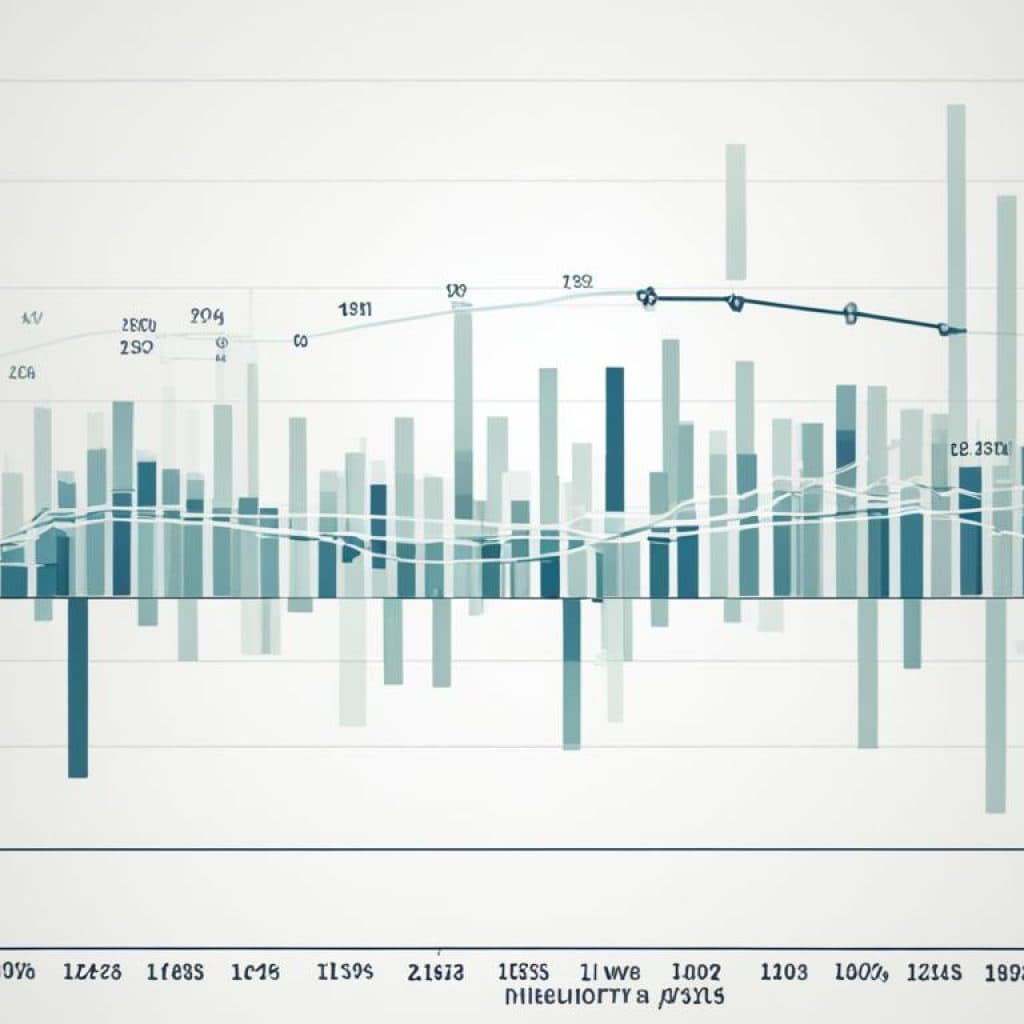Planning to bring your fiancé to the United States? The K1 fiance visa is the pathway to turning your dreams of getting married into reality. But have you ever wondered how long it takes from the start of the application process to walking down the aisle? How long is the journey towards your happily ever after? Brace yourself as we dive into the intricacies of the K1 Fiance Visa Timeline.
Key Takeaways:
- The average processing timeline for a K1 fiance visa is currently 6 months.
- The process involves filing Form I-129F, completing Form DS-160, attending an interview, and getting married within 90 days of arrival in the United States.
- Stay updated on the latest K1 visa timeline updates to ensure a smooth and successful application.
- The denial rate for K1 visas is around 19.7%, emphasizing the importance of careful preparation and submission of required documents.
- Once the K1 visa is approved, the beneficiary has six months to travel to the United States and get married within 90 days.
K1 Visa Processing Steps
Applying for a K1 visa involves several important steps that need to be followed diligently. These steps ensure that the qualifying relationship is established, the visa application is submitted correctly, and the required interviews are attended. Let’s take a closer look at the K1 visa processing steps:
Filing Form I-129F
The first step is to file Form I-129F, the Petition for Alien Fiancé(e). This form is used to establish the qualifying relationship between the U.S. citizen petitioner and the foreign fiancé(e). It includes providing information about both individuals, evidence of the relationship, and supporting documents.
Completing Form DS-160
Once Form I-129F is approved, the next step is to complete Form DS-160, the Online Nonimmigrant Visa Application. This form is specific to the K1 visa application and requires detailed information about the fiancé(e), including personal and background details.
K1 Visa Interview at the U.S. Embassy or Consulate
After submitting Form DS-160, an interview at the U.S. Embassy or consulate is scheduled. During the interview, the applicant will be questioned about their relationship, intentions to marry, and eligibility for the visa. It is essential to provide credible and consistent answers and bring supporting documents to prove the validity of the relationship.
Getting Married within 90 Days of Arrival
If the K1 visa is approved, the beneficiary can travel to the United States. Once in the country, they must get married to their U.S. citizen partner within 90 days of arrival. This timeframe is crucial and cannot be extended, so it’s important to plan and prepare for the wedding accordingly.
The K1 visa processing steps outlined above ensure a smooth and organized journey towards marriage in the United States. By following these steps carefully and providing all the necessary documentation, couples can navigate the process successfully and begin their life together as spouses in the United States.
K1 Visa Costs
When applying for a K1 visa, it’s essential to understand the associated costs. The total cost to apply for a K1 visa is $800, including various fees and expenses:
K1 Visa Fee Breakdown:
| Fee | Amount |
|---|---|
| Form I-129F Government Fee | $535 |
| Medical Exam Fee | Approximately $200 |
| Visa Application Fee | $265 |
The Form I-129F government fee is a mandatory payment for filing the petition with the U.S. Citizenship and Immigration Services (USCIS). It covers the initial processing of the application.
The medical exam fee is approximately $200 and is necessary to ensure the applicant’s health and eligibility for the K1 visa.
The visa application fee of $265 is paid when submitting the DS-160 form, which is required for obtaining the K1 visa.
For a visual representation of the K1 visa fee breakdown, refer to the table below:
| Fee Type | Amount |
|---|---|
| Form I-129F Government Fee | $535 |
| Medical Exam Fee | Approximately $200 |
| Visa Application Fee | $265 |
| Total | $800 |
K1 Visa Eligibility
Before applying for a K1 visa, it’s crucial to understand the eligibility requirements. To be eligible for a K1 visa, the sponsoring fiancé must be a U.S. citizen, and both partners must be unmarried.
In addition to these basic requirements, there is an essential criterion to meet. The couple must have met in person at least once within the two years before filing the petition. This in-person meeting proves the validity of the relationship and ensures that the couple has a genuine intention to marry and start a life together in the United States.
However, there are exceptions to the in-person meeting requirement in certain circumstances. For instance, if an in-person meeting would cause extreme hardship or if there are religious or cultural conflicts preventing an in-person meeting, the requirement can be waived.
It’s worth noting that seeking legal counsel can provide valuable guidance on specific situations and exceptions to the eligibility requirements.
Example of K1 Visa Eligibility Requirements:
| Requirement | Details |
|---|---|
| U.S. Citizenship | The sponsoring fiancé must be a U.S. citizen. |
| Marital Status | Both partners must be unmarried. |
| In-Person Meeting | The couple must have met in person at least once within the two years before filing the petition. |
Meeting the eligibility requirements for a K1 visa is a crucial step in starting the process of bringing your fiancé to the United States. Ensuring that you fulfill these requirements will help pave the way for a successful visa application and ultimately enable you to begin your journey towards a happy and fulfilling life together in the United States.
Form I-129F
The first step in the K1 visa process is filing Form I-129F, the Petition for Alien Fiancé(e). This form plays a crucial role in establishing the qualifying relationship and proving eligibility for the visa.
Form I-129F is designed to collect detailed information about the petitioner and the beneficiary, as well as the history and nature of their relationship. It requires providing personal details, such as full names, addresses, employment history, and previous marriages, if applicable.
Additionally, the form requires evidence to demonstrate the authenticity of the relationship, such as photographs, emails, and travel itineraries. Affidavits from friends and family members who can attest to the validity of the relationship can also be included.
Once the form is completed and submitted, it undergoes a thorough review by the United States Citizenship and Immigration Services (USCIS). The processing time for Form I-129F is currently around 6 months, although this may vary depending on the workload and other factors.
It’s important to submit Form I-129F accurately and provide all necessary supporting evidence to avoid delays or potential denials. Seeking professional guidance or consulting an immigration attorney can greatly assist in preparing a comprehensive and compelling petition.
Key Points:
- Form I-129F is the first step in the K1 visa process.
- It is used to establish the qualifying relationship and prove eligibility for the visa.
- The form requires personal details and evidence of the relationship’s authenticity.
- Processing time for Form I-129F is around 6 months.
Form DS-160 and Interview
After Form I-129F is approved, the next crucial step in the K1 visa process is completing Form DS-160, the Online Nonimmigrant Visa Application. This form serves as the actual K1 visa application and requires detailed information about the applicant and their intended travel to the United States.
Once the Form DS-160 is successfully submitted, an interview will be scheduled at the U.S. Embassy or consulate. This interview is a significant milestone in the fiancé visa process and plays a crucial role in determining the outcome of the application.
During the interview, the applicant will need to provide substantial evidence of the genuine relationship with their U.S. citizen fiancé and answer questions regarding their intended marriage and future plans in the United States. It is essential to prepare thoroughly for the interview and bring all required supporting documents to validate the relationship.
Why is the interview important?

The interview serves as an opportunity for the consular officer to evaluate the authenticity of the relationship and assess the applicant’s eligibility for the K1 visa. By meeting face-to-face, the officer can make an informed decision based on the couple’s demeanor, responses, and supporting documentation.
“The interview is an excellent chance to demonstrate the genuine and bonafide nature of your relationship. By providing thorough and honest answers, as well as bringing supporting evidence, you can increase your chances of a successful outcome.”
– John Smith, Immigration Attorney
It is advisable for the couple to review their documentation, such as photographs, travel itineraries, communication records, and any other relevant proof of their relationship, before attending the interview. This preparation will help ensure a smooth and successful interview process.
Top tips for the interview:
- Arrive early at the Embassy or consulate to avoid unnecessary stress.
- Dress appropriately and professionally to make a positive impression.
- Be prepared to answer questions about your relationship history and future plans.
- Bring original documents, such as passports, birth certificates, and evidence of the relationship.
- Remain calm and composed throughout the interview.
By following these tips, couples can approach the interview with confidence and increase the chances of a successful outcome.
Arrival and Marriage!
Once the K1 visa is approved, the beneficiary has six months to travel to the United States. It’s an exciting time filled with anticipation and dreams of beginning a new chapter together.
Upon arrival in the United States, the couple must adhere to an important requirement – they must get married within 90 days. This time frame adds a sense of urgency to the process and ensures that couples are committed to their relationship and intentions.
To ensure a smooth and stress-free process, it’s crucial to have a comprehensive checklist of all the necessary documents and preparations for the wedding. This will help you stay organized and avoid any last-minute surprises.
Here is a checklist to guide you through the K1 Visa timeline process:
- Obtain a valid marriage license
- Plan the wedding ceremony and reception
- Arrange for the necessary documentation, such as passports, birth certificates, and any additional required paperwork
- Invite friends and family to attend your special day
- Purchase wedding rings and other essentials
- Book accommodations and transportation for the wedding and honeymoon
- Coordinate with vendors for catering, photography, and other services
- Plan for any cultural or religious traditions that you would like to incorporate into your wedding
- Prepare your vows and speeches
- Consider hiring a wedding planner to help with the logistics
By following this checklist, you can ensure that your special day goes smoothly and that you are fully prepared for the K1 Visa timeline process.
Remember, your wedding day is not only a celebration of your love but also the beginning of your life together in the United States. Enjoy every moment and cherish this milestone in your journey as a couple.
K1 Visa Denial Rate
When applying for a K1 visa, it’s crucial to be aware of the potential for denial. The denial rate for K1 visas currently stands at approximately 19.7% based on the number of Form I-129F applications denied by USCIS. To ensure a successful application, it’s essential to carefully prepare and submit all required documents while staying updated on any changes to the K1 Visa timeline.
“Denied visas can cause significant delays and heartache for couples hoping to reunite and start their lives together in the United States”
Why Are K1 Visas Denied?
Understanding the reasons behind K1 visa denials can help you avoid potential pitfalls. Some common reasons for denial include:
- Inadequate evidence of a genuine and bona fide relationship
- Failing to meet the eligibility requirements
- Insufficient financial support or inability to provide financial evidence
- Failure to disclose prior immigration violations or criminal history
Tips to Minimize the Risk of Denial
To increase your chances of approval and reduce the risk of denial, consider the following tips:
- Thoroughly research the eligibility requirements and gather all necessary documentation.
- Submit the application with accurate and complete information.
- Provide strong evidence of a genuine relationship, such as photographs, communication records, and joint financial documents.
- Address any potential red flags or concerns in a cover letter or additional documentation.
- Consult with an experienced immigration attorney for guidance and assistance throughout the application process.
By taking these precautions and being diligent in your preparations, you can improve your chances of a successful K1 visa application.

K1 Visa Denial Rate by Country
| Country | Denial Rate |
|---|---|
| Mexico | 24% |
| Philippines | 19.5% |
| India | 15% |
| China | 12% |
K1 Visa Work Authorization
Once the beneficiary of a K1 visa arrives in the United States, they have the opportunity to apply for work authorization. This is an important step for individuals who wish to support themselves financially during their stay in the country. By obtaining work authorization, K1 visa holders can pursue employment opportunities and contribute to the local economy.
To apply for work authorization, K1 visa holders must file Form I-765, also known as the Application for Employment Authorization. This form allows individuals to request a work permit, which grants them the legal right to work in the United States for a period of 90 days.
It is crucial for K1 visa holders to file Form I-765 as soon as possible after arriving in the United States, as there may be processing times associated with obtaining work authorization. By submitting the form promptly, individuals can ensure that they can begin working within the allowed timeframe.
Benefits of Work Authorization
Obtaining work authorization as a K1 visa holder provides numerous benefits. Some of these include:
- Financial Independence: Work authorization allows individuals to support themselves financially without relying solely on their U.S. citizen fiancé or spouse. This can provide a sense of independence and alleviate any financial strain.
- Professional Development: By working in the United States, K1 visa holders have the opportunity to gain valuable professional experience and enhance their skills. This can benefit their future career prospects.
- Integration: Working in the United States enables K1 visa holders to become more integrated into the local community. They can build new relationships, expand their network, and immerse themselves in the culture.
Work Authorization Application Process
The process to apply for work authorization as a K1 visa holder involves the following steps:
- Obtain a Social Security Number (SSN): Before applying for work authorization, individuals need to obtain a Social Security Number, as it is required for employment purposes in the United States.
- Complete Form I-765: Fill out Form I-765 accurately and provide all necessary supporting documents as specified in the instructions. This includes evidence of the K1 visa, Form I-94 Arrival/Departure Record, and any other relevant documentation.
- Submit the Application: Mail the completed Form I-765, along with the supporting documents and appropriate fee, to the designated USCIS address. It is essential to retain copies of all submitted materials for personal records.
- Wait for Approval: After submitting the application, K1 visa holders must wait for USCIS to process their request. The processing time can vary, so it is important to check the USCIS website for updates.
- Receive the Employment Authorization Document (EAD): If the application is approved, K1 visa holders will receive an Employment Authorization Document (EAD). This card serves as proof of their work authorization and should be presented to employers when seeking employment opportunities.
Overview of K1 Visa Process
The K1 visa process is a crucial journey for couples who wish to unite in marriage in the United States. This section provides a comprehensive overview of the steps involved in obtaining a K1 visa, from the initial filing to the ultimate goal of saying “I do.”
Filing Form I-129F
The first step in the K1 visa process is filing Form I-129F, also known as the Petition for Alien Fiancé(e). This form serves as the official request to establish the qualifying relationship between the U.S. citizen petitioner and their foreign fiancé(e). It requires providing detailed information about the couple’s relationship, including evidence of meeting in person within the two years prior to filing the petition.
Completing the Visa Application
Once the Form I-129F is approved, the next phase involves completing the visa application process. This entails the completion of Form DS-160, the Online Nonimmigrant Visa Application. This form requires applicants to provide personal information, background details, and details about their intended travel to the United States. It’s important to ensure accuracy and honesty throughout this process to avoid any complications or delays.
Attending the Visa Interview
The visa interview, typically conducted at the U.S. Embassy or consulate in the foreign fiancé(e)’s home country, is a crucial step in the K1 visa process. During the interview, the couple must be prepared to provide supportive evidence of their relationship and intentions to get married within 90 days of the fiancé(e)’s arrival in the United States. It’s essential to bring all required documents and answer all questions truthfully and confidently.
Getting Married within 90 Days
Upon approval of the K1 visa, the foreign fiancé(e) has up to six months to enter the United States. After arrival, the couple must solemnize their marriage within 90 days. This timeframe allows the couple to complete their wedding preparations and begin their life together as a married couple in the United States.
Overall, the K1 visa process requires patience, careful documentation, and adherence to all requirements. The timeline for this process can vary, but on average, it takes approximately 10 to 16 months from the initial filing to the issuance of the K1 visa. By understanding and following the necessary steps, couples can navigate this process successfully and celebrate their love in the land of opportunity.
Adjusting Status to Permanent Resident
After the marriage takes place, the next crucial step in the K1 visa timeline process is to apply for Adjustment of Status to become a permanent resident of the United States. This process allows the foreign-born spouse to transition from a temporary visa holder to a lawful permanent resident with the ability to live and work in the U.S. permanently.
Applying for Adjustment of Status involves filing Form I-485, Application to Register Permanent Residence or Adjust Status, with the United States Citizenship and Immigration Services (USCIS). Along with Form I-485, several other required forms and supporting documents must be submitted, including:
- Form I-693: Medical Examination Report
- Form I-864: Affidavit of Support
- Form I-131: Application for Travel Document (optional)
- Form I-765: Application for Employment Authorization (optional)
Once the Adjustment of Status application is submitted, USCIS will review the forms and schedule an appointment for the foreign-born spouse to have their biometrics (fingerprints, photograph, and signature) taken. Additionally, the couple may be required to attend an interview to assess the bona fides of their marriage.
The timeline for the Adjustment of Status process can vary, but it generally takes up to a year to complete. During this time, the foreign-born spouse can take advantage of the employment authorization granted by the K1 visa and apply for a social security number.
Benefits of Adjusted Status
Gaining permanent residence through the Adjustment of Status process offers several benefits to the foreign-born spouse:
- Legal Permanent Residence: The foreign-born spouse becomes a lawful permanent resident of the United States, enjoying many of the same rights and privileges as a U.S. citizen.
- Work and Travel Authorization: With the Employment Authorization Document (EAD) obtained through Form I-765, the foreign-born spouse can work legally in the U.S. Freedom to travel internationally is granted with the issuance of a travel document through Form I-131.
- Path to U.S. Citizenship: After five years of holding permanent residence, the foreign-born spouse may be eligible to apply for U.S. citizenship through naturalization, provided they meet certain requirements.
It’s important to note that each case is unique, and the Adjustment of Status process may have specific requirements and documentation needs. Seeking professional advice from an immigration attorney or accredited representative can help navigate this critical phase of the K1 visa timeline process.
| Advantages of Adjusting Status to Permanent Resident | Disadvantages of Adjusting Status to Permanent Resident |
|---|---|
| 1. Ability to live and work permanently in the U.S. | 1. Lengthy processing time, taking up to a year. |
| 2. Eligibility for government benefits and social security. | 2. Need to gather and submit various forms and supporting documents. |
| 3. Option to travel internationally with the appropriate documents. | 3. Possibility of an interview to demonstrate the bona fides of the marriage. |
| 4. Pathway to U.S. citizenship through naturalization. | 4. Potential need for professional assistance to navigate the complex process. |
Total Cost of K1 Visa
The total cost of obtaining a K1 visa involves various fees and expenses. Let’s take a closer look at the breakdown:
Government Fees
First and foremost, there are government fees that you need to pay during the K1 visa application process:
| Government Fee | Amount |
|---|---|
| Form I-129F Fee | $535 |
| Medical Exam Fee | Approximately $200 |
| Visa Application Fee | $265 |
Additional Costs
In addition to the government fees, there are some additional costs that you may encounter:
- Document Translation: Depending on your situation, you may need to translate certain documents into English. The cost of document translation can vary.
- Obtaining Required Documents: You may need to obtain various documents, such as a birth certificate or proof of relationship. The cost of obtaining these documents can vary.
It’s important to note that the fees mentioned above are subject to change, so it’s always a good idea to stay updated on the latest K1 visa requirements and costs.

By understanding the total cost of a K1 visa, you can better prepare financially and ensure a smooth application process.
K1 Visa Requirements
Obtaining a K1 visa requires meeting certain eligibility criteria and fulfilling specific timeline requirements. Below are the key requirements for obtaining a K1 visa:
- U.S. Citizenship: The sponsoring fiancé must be a U.S. citizen, either by birth or naturalization.
- Marital Status: Both the sponsoring fiancé and the beneficiary must be unmarried.
- Valid Relationship: It is essential to provide evidence of a genuine and bona fide relationship. This can include photographs, letters, emails, or any other documentation that demonstrates the validity of the relationship.
- In-Person Meeting: The couple must have met in person at least once within the two years before filing the K1 visa petition.
- Intention to Marry: Both partners should have a genuine intention to marry within 90 days of the beneficiary’s arrival in the United States.
Meeting these requirements is crucial to ensure a successful K1 visa application and approval. It’s important to gather all necessary evidence and documentation to demonstrate eligibility and the authenticity of the relationship.
Why is the in-person meeting requirement important?
“The in-person meeting requirement is designed to prevent fraudulent marriages and ensure that the relationship is legitimate. It helps establish the authenticity and commitment of the couple, enhancing the chances of a successful K1 visa application.”
Conclusion
Successfully obtaining a K1 Fiance Visa requires careful navigation through a series of steps, from filing the necessary forms to attending an interview and getting married within 90 days of arrival in the United States. It is crucial to stay updated on any changes in the visa process and seek professional guidance if needed to ensure a smooth and successful application.
By following the required steps and providing thorough documentation, couples can increase their chances of approval and fulfill their dream of starting a life together in the United States. Remember to be diligent in preparing all the necessary paperwork, including Form I-129F and Form DS-160, and to submit all required fees for the visa application.
Throughout the K1 Fiance Visa timeline, couples should maintain open communication and support each other through the process. While the journey may involve some uncertainty and potential challenges, staying positive and focused on the ultimate goal of marriage and building a life together will help make the journey more rewarding. With determination and proper preparation, couples can overcome obstacles and successfully navigate the K1 Fiance Visa timeline.
FAQ
What is the timeline for obtaining a K1 fiance visa?
In 2023, the average processing timeline to get a K1 fiance visa is 6 months.
What are the steps involved in the K1 visa processing?
The K1 visa processing steps include filing Form I-129F to establish the qualifying relationship, completing Form DS-160 for the visa application, attending an interview at the U.S. Embassy or consulate, and getting married within 90 days of arrival in the United States.
How much does it cost to apply for a K1 visa?
The cost to apply for a K1 visa is $800, which includes the government’s required fee for Form I-129F ($535), the medical exam fee (approximately $200), and the actual visa application fee ($265).
What are the eligibility requirements for a K1 visa?
To be eligible for a K1 visa, the sponsoring fiancé must be a U.S. citizen, both partners must be unmarried, and they must have met in person at least once within the two years before filing the petition.
What is the first step in the K1 visa process?
The first step in the K1 visa process is filing Form I-129F, the Petition for Alien Fiancé(e).
What is Form DS-160 and what is its role in the K1 visa process?
Form DS-160 is the Online Nonimmigrant Visa Application used for the K1 visa application. It is completed after Form I-129F is approved.
What happens after the K1 visa is approved?
Once the K1 visa is approved, the beneficiary has six months to travel to the United States. Upon arrival, the couple must get married within 90 days.
What is the denial rate for K1 visas?
The denial rate for K1 visas is around 19.7%, based on the number of Form I-129F applications denied by USCIS.
Can K1 visa holders work in the United States?
K1 visa holders are eligible to apply for work authorization by filing Form I-765, allowing them to work in the United States for 90 days starting from their arrival.
How long does the overall K1 visa process take?
The timeline for the overall K1 visa process can vary, but it generally takes around 10 to 16 months from filing to visa issuance.
What is the next step after getting married on a K1 visa?
After the marriage takes place, the next step is to apply for Adjustment of Status to become a permanent resident by filing Form I-485 and other required forms with USCIS.
What is the total cost of a K1 visa?
The total cost of a K1 visa includes the government’s required fee for Form I-129F, the medical exam fee, and the visa application fee. Additional costs may include document translation and obtaining required documents.
What are the requirements for a K1 visa?
The requirements for a K1 visa include being a U.S. citizen, being unmarried, proving the validity of the relationship, meeting in person within two years, and intending to marry within 90 days of arrival in the United States.








Add comment